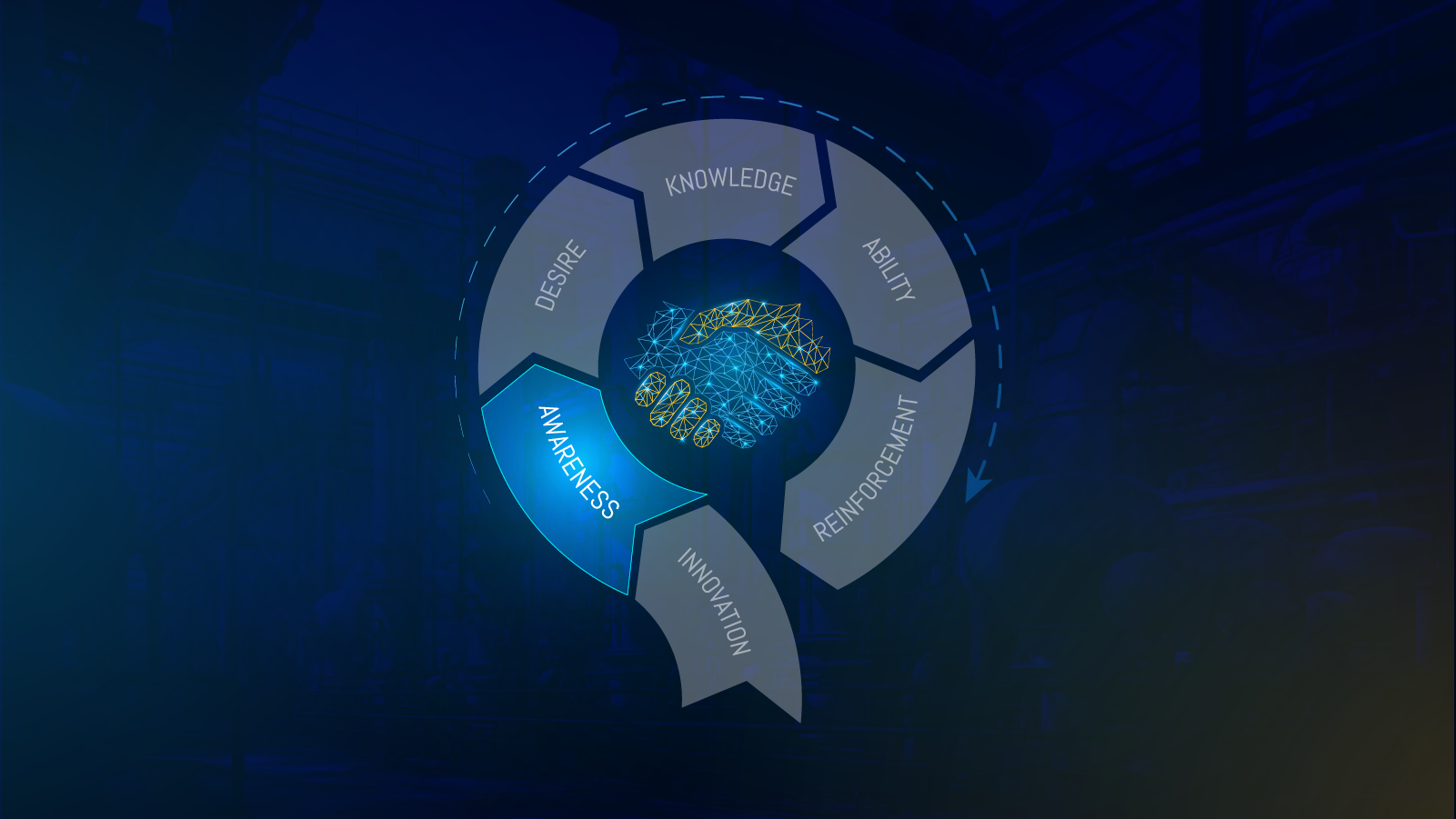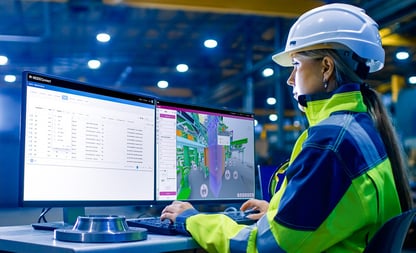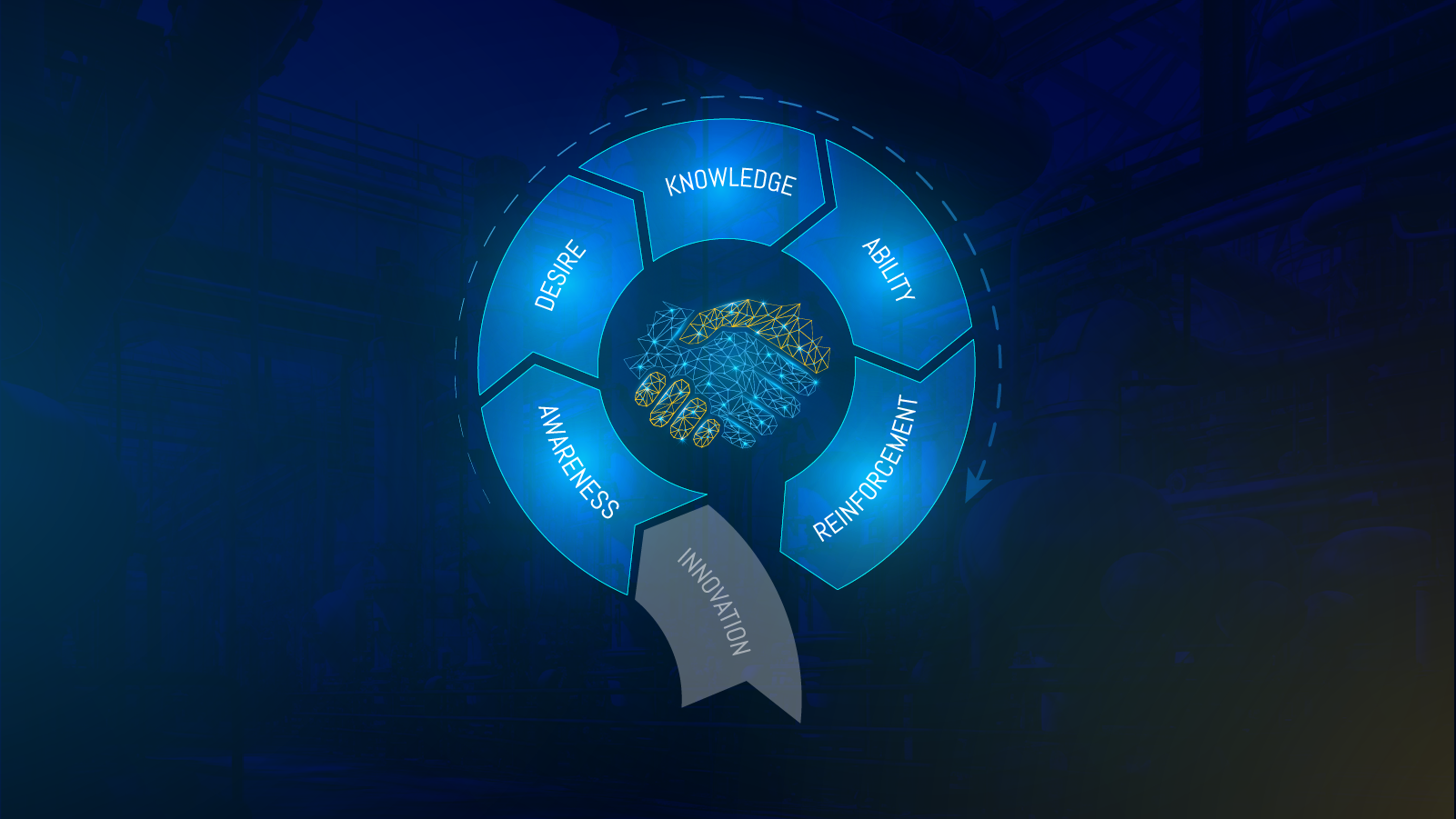Digital Completions in Plant Modifications and Upgrades
Unlike greenfield or any new build construction projects, plant modifications and upgrades present a unique set of challenges. Work is carried out...
3 min read
 Lisa De Vellis, PE
:
Oct 6, 2023 8:30:00 AM
Lisa De Vellis, PE
:
Oct 6, 2023 8:30:00 AM

MODS and Petrofac collaborated on a research paper unveiled at the ADIPEC Exhibition and Conference in Abu Dhabi on November 2, 2023. This paper introduces the human-centric ADKAR change management model as a catalyst for expediting digital transformation (DX).
Titled Enhancing EPC Brownfield Project Execution with AWP: Leveraging the ADKAR Change Management Model for Scalability and Improved Adoption, the paper advocates for a user-centered approach to DX, emphasizing enduring cultural transformation. The approach is underscored by a five-step framework:
This blog series is dedicated to exploring each of the five ADKAR stages to accelerate and optimize DX within digital partnerships. Our journey through the ADKAR model places people at the forefront, and starts with step 1: Awareness.
Whether you're leading a digital transformation initiative or striving to enhance your team's digital capabilities, creating Awareness throughout all organizational levels is an essential bedrock to lasting organizational change.
Industrial sectors such as oil and gas (O&G) across the UK Continental Shelf (UKCS) are slow to embrace digital transformation. Particularly in brownfield UKCS projects, this lack of uptake of efficiency-enhancing technologies means that many of these sites continue to rely on paper-based processes.
While some O&G companies have initiated digitalization projects to enhance workflows, around 70 percent have not moved beyond the pilot phase. Interestingly, the problem does not lie in the technology itself. Limited digital adoption in these contexts can be linked to the following three challenges:
These cultural and organizational issues hinder the sector from harnessing the full potential of digital technologies, despite the cost-saving, safety-enhancing and decarbonizing opportunities they present.

Change is good. And, life is nothing if not change. Yet, humans being humans, we often resist change as though it is a threat to our stability and well-being. Paradoxically, it is change that can bring about unexpected and valuable improvements in our lives. Digital transformation is one such thing.
The first step in the ADKAR change management process is Awareness. The goal for this essential step is to draw attention to the need to change and convince that change is positive. Effective digital partnerships start here.
At its core, digital transformation entails replacing paper-based processes with digital tools and systems. This shift can lead to significant benefits, such as reducing data-sharing time, streamlining administrative tasks, shortening project closeout schedules, and improving overall project efficiency.
It is the deficiency of these things with the status quo – the stress and headaches of massaging workflows into place, lost time due to human error, the inability to find critical information at a moment’s notice – that pique peoples’ Awareness to the need to change. Understanding that solutions do exist that eliminate these burdens and make work a more streamlined, fulfilling thing ought to convince people that prospective change will have a positive impact on their personal performance and well-being at work.
Successful digital transformation requires aligning people, processes, and technology. Often, organizations focus more on the technological aspect and neglect the human component. Yet, it is crucial to address the mindset, skills, and working practices of end-users to ensure successful adoption. An organizational change management paradigm such as ADKAR serves to convince, educate, and empower users, ultimately maximizing the return on investment in digital transformation initiatives.
Not all SaaS providers are digital partners. But, some are. What does this mean, exactly?
An apt digital partner would be most well-placed to help create awareness of the need for positive change. To successfully draw attention to the need for change, and to convince people that the change in question is positive, the right digital partner helps with the following actions:
The key here is evidence-based. Drawing upon unassailable facts is important to garner buy-in. Creating Awareness may be one of those concepts that feels a bit soft. So it’s especially important to monitor progress when managing change and, in the case of the ADKAR model, to push forward in a digital transformation.
Digital partners offer a soup-to-nuts service, providing not only software and other tools, but assisting throughout and beyond the challenges of change management to optimize uptake and scalability of the desired solution.
To monitor awareness-building progress, it is recommended to:
When Awareness of the problem and a proposed solution exists, the ADKAR model of change management progresses to Desire, wherein people genuinely want to embrace the change so that they can get ever closer to realizing the benefits of the change to their ways of working.

Unlike greenfield or any new build construction projects, plant modifications and upgrades present a unique set of challenges. Work is carried out...

Turnarounds and shutdowns are among the most critical—and stressful—phases in the management and operation of industrial assets. These planned...

Offshore decommissioning and asset retirement present significant logistical, regulatory, safety, fiscal and reputational challenges. The process of...

“Even the most advanced technology can’t achieve anything by itself. Value emerges as a combination of the tool and the people who operate it....

To realize increased efficiencies in construction execution, the ability to adapt to change by onboarding new technologies is paramount....

Managing organizational change for successful digital transformation benefits hugely from a robust digital partnership. Leaning on a change...